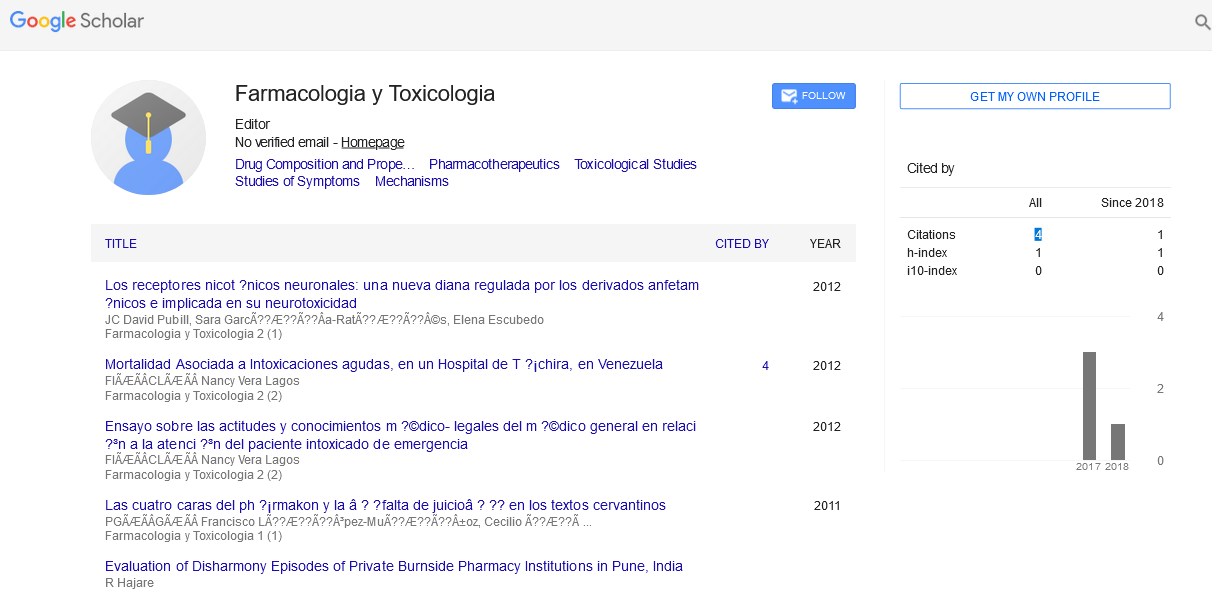Perspective - (2024) Volume 14, Issue 5
Side Effects: Unintended Effects of Drugs at Normal Doses
Magdalena Strus*
Department of Pharmacology, University of Cophenagin, Frederiksberg, Denmark
*Correspondence:
Magdalena Strus, Department of Pharmacology, University of Cophenagin, Frederiksberg,
Denmark,
Email:
Received: 07-Aug-2024, Manuscript No. IPFT-24-15135;
Editor assigned: 12-Aug-2024, Pre QC No. IPFT-24-15135 (PQ);
Reviewed: 26-Aug-2024, QC No. IPFT-24-15135;
Revised: 01-Oct-2024, Manuscript No. IPFT-24-15135 (R);
Published:
29-Oct-2024
Introduction
Pharmacology, the study of drugs and their effects on the
body, often focuses on the therapeutic benefits of medications.
However, a crucial aspect of pharmacology that warrants equal
attention is the side effects of drugs. These are unintended
effects that occur even when a drug is administered at normal
therapeutic doses. Side effects can range from mild
inconveniences to severe health risks and understanding them is
vital for ensuring patient safety and effective treatment
management. This article explores the nature of side effects,
their causes and strategies for managing them.
Description
Side effects
Side effects are adverse reactions or unintended
consequences that occur when a drug is used as prescribed.
They are distinct from allergic reactions, which are immune
responses triggered by a drug. Side effects are a common aspect
of drug therapy and can manifest in various forms, including
physical symptoms, behavioral changes or interactions with
other medications. Importantly, side effects are not necessarily a
sign that a drug is ineffective; rather, they are an inherent aspect
of pharmacotherapy.
Causes of side effects
The causes of side effects are multifaceted and often involve
complex interactions between the drug, the body and external
factors. Here are some key factors contributing to side effects:
Pharmacological properties: The inherent characteristics of a
drug, such as its mechanism of action, metabolism and
excretion, can lead to side effects. For example, a drug that
affects neurotransmitter levels in the brain may cause mood
changes or cognitive effects as side effects.
Receptor interactions: Drugs often act by binding to specific
receptors in the body. However, they may also interact with
other receptors unintentionally, leading to off-target effects. For
instance, a medication designed to treat high blood pressure
may also influence receptors involved in blood sugar regulation,
resulting in unintended changes in glucose levels.
Individual variability: Patients differ in their genetic makeup,
health status and other factors that can influence how they
respond to medications. Genetic variations can affect drug
metabolism and efficacy, making some individuals more
susceptible to side effects.
Drug interactions: The simultaneous use of multiple drugs can
lead to interactions that enhance or diminish the effects of each
drug, sometimes resulting in adverse side effects. For example,
combining certain antidepressants with anticoagulants can
increase the risk of bleeding.
Dosage and duration: Even when used at recommended
doses, drugs may cause side effects due to the cumulative
effects of long-term use or because the dosage is not optimally
tailored to the individual.
Common side effects
Side effects can vary widely depending on the drug and its
intended use. Some common side effects include:
Gastrointestinal issues: Nausea, vomiting, diarrhea and
constipation are frequent side effects of many medications,
including antibiotics and pain relievers.
Central nervous system effects: Drowsiness, dizziness and
headaches are often reported with medications affecting the
central nervous system, such as antihistamines and sedatives.
Skin reactions: Rashes, itching and photosensitivity can occur
with various drugs, including antibiotics and anti-inflammatory
medications.
Metabolic changes: Some medications can impact metabolic
processes, leading to weight gain, changes in blood sugar levels
or altered cholesterol levels.
Cardiovascular effects: Drugs that affect blood pressure or
heart function may cause side effects such as palpitations,
hypertension or hypotension.
Managing side effects
Effective management of side effects is crucial for optimizing
patient outcomes and improving adherence to medication
regimens. Here are some strategies for managing side effects:
Patient education: Educating patients about potential side
effects and how to recognize them empowers them to seek
timely medical advice. Understanding that side effects are
possible can also help patients differentiate between normal
reactions and more serious issues.
Monitoring and follow-up: Regular monitoring of patients,
especially those on long-term medications, allows healthcare
providers to detect side effects early and adjust treatment as
needed. Routine check-ups and lab tests can help identify
adverse effects before they become severe.
Dose adjustment: In some cases, adjusting the dosage of a
medication can mitigate side effects while maintaining
therapeutic efficacy. Lowering the dose or using extendedrelease
formulations may reduce the likelihood of adverse
reactions.
Alternative medications: If a particular drug causes
intolerable side effects, healthcare providers may consider
switching to alternative medications with a better side effect
profile.
Supportive care: Managing side effects may involve additional
treatments or interventions to alleviate symptoms. For example,
anti-nausea medications can help manage gastrointestinal side
effects.
Research and innovation
Ongoing research aims to minimize side effects by developing
drugs with more targeted actions and fewer off-target
interactions. Advances in pharmacogenomics, which studies how
genetic differences affect drug responses, hold promise for
personalizing treatment and reducing adverse effects.
Conclusion
Side effects are an important consideration in
pharmacotherapy, impacting both patient safety and treatment
efficacy. By understanding the causes of side effects and
employing strategies for their management, healthcare
providers can enhance patient care and improve therapeutic
outcomes. Continuous research and innovation in drug
development also offer hope for minimizing side effects and
tailoring treatments to individual needs. In the end, a balanced
approach to managing side effects ensures that the benefits of
medication outweigh the risks, ultimately contributing to better
health and well-being for patients.
Citation: Strus M (2024) Side Effects: Unintended Effects of Drugs at Normal Doses. Farmacologia Toxicologia, Vol.14 No.5: 050





